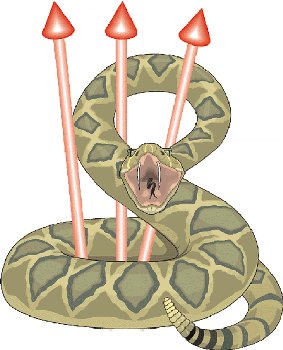The discovery of spin was a surprise, and the subsequent history of spin physics has lived up to this reputation. With plenty of spin puzzles still around, physicists have to look at how to handle spin at the highest energies.

More than 10 years after the European Muon Collaboration at CERN discovered that the proton’s quarks account for only a fraction of the particle’s spin, physicists have been trying to find the “missing” component. This means exploring spin structure and content under higher-energy conditions.
The production of high-energy polarized proton beams and their subsequent long-term storage is one of the greatest challenges facing accelerator physicists. This was high on the agenda at a workshop on Polarized Protons at High Energies – Accelerator Challenges and Physics Opportunities, which was held at the DESY Laboratory in Hamburg earlier this year. Over 100 experts on the machine aspects of polarized proton beam acceleration and storage, spin physics and polarimetry were brought together.
Emphasis was placed on the polarized proton option for Brookhaven’s RHIC collider, which is expected to be commissioned next year, and the possible future storage of polarized protons in DESY’s HERA collider, in addition to the electrons and positrons that are already polarized.
The case for a fully polarized proton–electron HERA collider has been explored in two previous DESY workshops. Measurements at HERA include the structure functions g1 (the sum of the polarized quark and antiquark distributions) at low x (the quark momentum fraction) and g5 (the difference between the polarized quark and antiquark distributions), and polarized photoproduction measurements. The ability of HERA and RHIC to measure – for example, via jet or prompt photon production – the polarized gluon distribution, which is a likely source of spin, again underlined a measurement that is pivotal in understanding the spin structure of nucleons.
Previous studies have been updated, by using detailed detector simulation, for example, and several new channels have been proposed. New ideas were also presented for the HERA-N option in which the polarized proton beam would collide with a polarized, fixed target. The complementarity of the possible future physics programme at HERA and the programme at RHIC was emphasized.
Resonant depolarization during acceleration to high energy can be strongly suppressed using “Siberian snake” spin rotators. However, the snake schemes must be chosen carefully. High-intensity polarized sources, as well as high-quality polarization measurements, are needed at each step in the acceleration cycle.
Subjects for discussion included the necessary modifications to the HERA acceleration chain; the results of long-term spin-orbit tracking simulations for HERA and RHIC; progress on high-performance polarized sources; ideas for realistic snake layouts, which include plans for RHIC; experience at low-energy rings; various aspects of the theory of spin-orbit motion; and the description of helical magnetic fields. Significant advances were reported on all fronts. However, it remains clear that, to reach very high energy in HERA, a cooled beam would be desirable and that new means are needed to overcome the effects of closed-orbit distortion.
E Gabathuler, an opening plenary speaker, recalled the contribution of high-energy polarized scattering to our understanding of the structure of matter, and the surprises that emerged along the way. R Jaffe, A Deshpande and W Nowak reviewed the main aspects of the physics programme for polarized RHIC and HERA colliders. A Krisch recalled the efforts to achieve polarized proton beams at Brookhaven, and the commissioning of the Siberian snake at the IUCF ring in Indiana.
Siberian snakes for the polarized RHIC option are being constructed and will be commissioned in the near future for polarized proton collisions at an collision energy of 200 GeV. The experience that the Brookhaven Lab has in the acceleration and storage of polarized protons will be of vital use in the polarized HERA project.
The current position of the the RHIC spin option was detailed by T Roser. G Hoffstätter presented the status of the ongoing machine physics studies at DESY for HERA. The challenges in measuring the polarization of the high-energy proton beam were reviewed by G Bunce and K Kurita. Polarized ion sources, and the current spectacular developments in this field, were covered by L Anderson.
The future expectations of HERA, which has been running with polarized electron and positron beams for the HERMES experiment, were addressed by E Gianfelice-Wendt. Finally, the results, which will become available in the near future, from DESY (HERMES), CERN (COMPASS) and Jefferson (CEBAF) were reviewed by E Kinney.
A plenary session on polarimetry merited three summary talks. These were on machine aspects (A Chao), spin physics (T Gehrmann) and the general outlook (V Hughes).
A similar meeting, which will probably be held in the US, is planned for 2001, when the exciting results of RHIC will be available.





